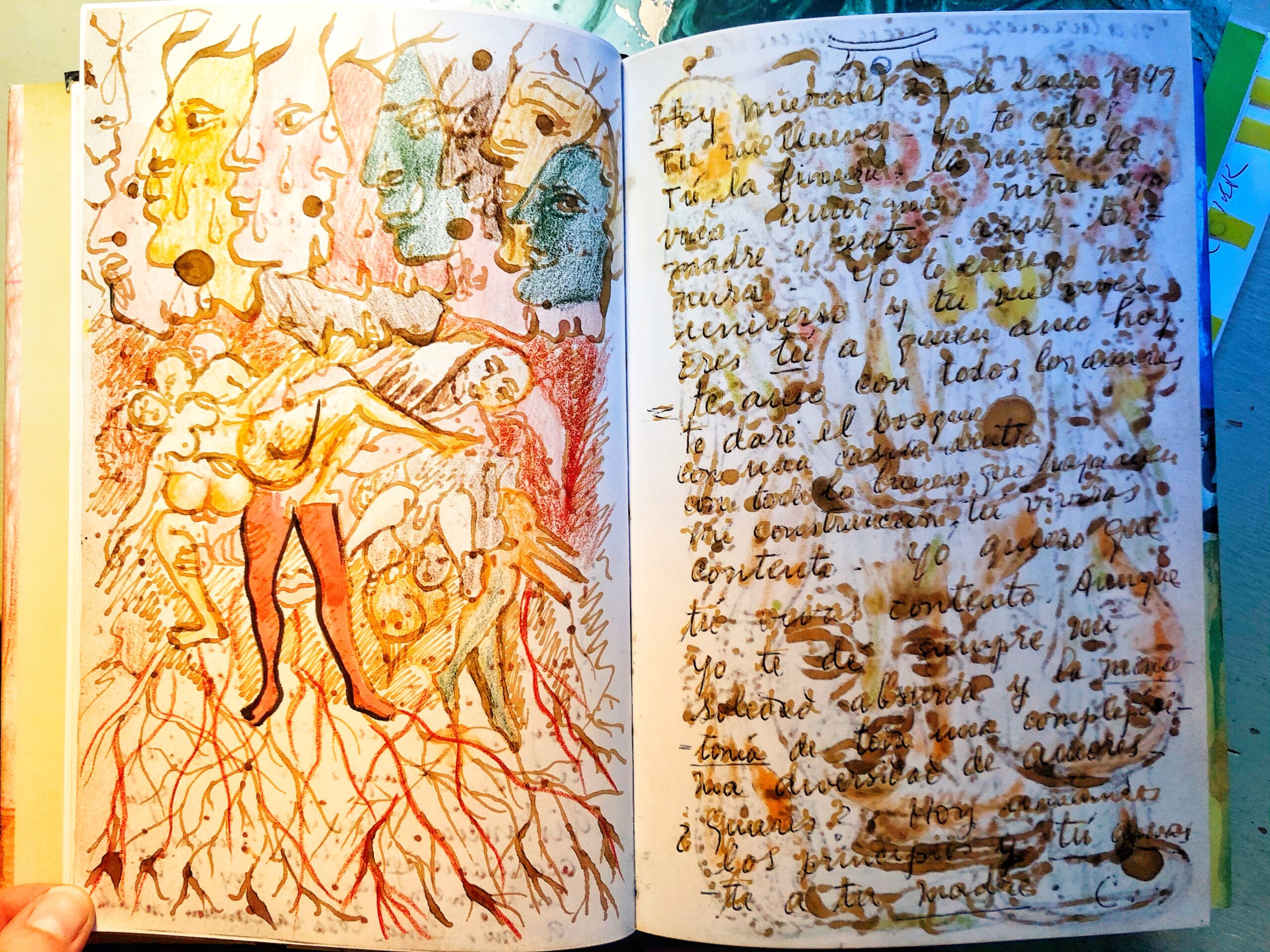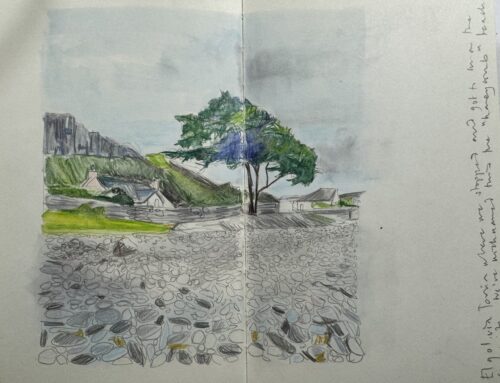What a fascinating woman Frida Kahlo was!
My sketchbook journey really began by keeping a written journal. I’m fascinated by the fusion of both journalling and drawing. The genre of the journal intime.
…I have always been fascinated by the sketchbooks of well known artists. Most of our famous contemporary 20th century artists kept sketchbooks. It has been a passion of mine to source them and add a whole level of meaning to my understanding of an artists’ work via their often hidden sketch diaries.
There is no better window into Frida Kahlo’s artwork than her diary, an intimate self portrait, a place of deeply private expression where the fusion of words and sketches show us the perfect example of keeping a private record that is written by a woman by herself and for herself. Early on in her career she was described as a surrealist artist. There is no better place to see the evolution of this extraordinary woman than through the pages of her journal.
It is clear that it is a record never intended to be viewed by others. I love flicking through its pages because it almost answers the question I always ask “why do we keep sketchbooks?” Perhaps we are more genuine in them, and in so being we produce the ideas that can drive our most creative masterpieces. Our sketchbooks are often the sources of our masterpieces, our messy mistakes, the first point of contact and the seed of a good idea that is captured even if our final public masterpieces, by the time we paint them, may not.
Kahlo, however, challenges this view point. She never really translated any of her sketches into final works of art (there was only 1), neither did she particularly capture the everyday in them either. Her sketchbook at once defines her and her work but also blasts our notions of what art is and how it should be displayed – who says that art is made only for public consumption? The text accompanying her drawings are totally unlinked at times to her images, often just long lists of associations, amusingly reminding me of the writings of James Joyce, only this time “a la” the artiste, somehow still landing a message home.
Whereas her “public” paintings are full of self control, eerily stylised with a huge amount of thought given to the subject matter (she was known for spending a long time considering her public works), her sketchbooks lean towards the opposite. Fast, messy and at times reduced to doodling across their pages. I love how she also uses a variety of mediums – a personal lesson to me that I should always give the use of more mediums a go and not be a convict to convention, at. all!
From the variety of different colour inks that she not only writes with in a beautiful cursive hand or splatters, scratches or spills and then fashions a sketch out of it, through to washes, the use of colouring pencils, and thick layers of gouache, sometimes striking through the writing underneath so that even we as reader will never ever know what is transcribed under it, forever consigned to the machinations of her mind. She also uses collage, defacing the original to create her own version. Her use of colour also interests me. You could tell just by flicking through the pages that her Mexican heritage is juxtaposed against the political backdrop of her time. She even flips the book around and works on it via different angles. Truly a surrealist socialist.
Frida Kahlo’s self portraits that you and I have all seen on coffee tables in books or on gallery walls are famous and very public. All 55 of them constitute one third of her entire artistic output. Her state of mind, her statement of opinion on death, pain, miscarriage and so on were woven into her self portraits of a woman painting her own life. But they are so so different to her personal musings. By the time she turned to keeping her journals she was around 37 years old and had already lived an emotionally painful life. She only got a journal window of 10 years, a woman tortured by physical pain, social responsibility and emotional heartache having to lie on countless operating tables. Not many people would survive the contraction of polio, a near death freak accident on a cable car which led to broken spine, pelvis and crushed legs, continual miscarriages and a life plagued by medical interventions to keep her alive. We would simply collapse beneath the sheer weight of it all.
And yet..
Entire books and search engine pages are dedicated to Frida Kahlo quotes,
“I learnt to drown my sorrows but the damned things learned how to swim,”
or “I paint flowers so they will not die!”
(as actually do I! My weekly flower sketches are an ode to capturing what they represent for me) have to be my two favourites. There is another angle to her sketchbook that strikes me every time. She drives home a reminder, like some sort of horror movie, about how fragile we are – the pain we experience (no one more so than her) BUT reminds us simultaneously, in some sort of apocalyptic hopeful heavenly vision, that this life is an excuse to explore, take notice of and remember the rich earth we are fiercely free to experience.
The colour, passion, rich heritage, and a fierce love of life and people, shaken together with a rye sense of humour to give a nod to, but contradict the darkness of life, flow from the pages of this extraordinary book called “The Diary of Frida Kahlo.”
Now wouldn’t that be a great eulogy to leave behind you in the pages of a sketchbook!
(I read the full and unabridged translated “The Diary of Frida Kahlo. An Intimate Self Portrait.” Introduction by Carlos Fuentes. Abrams. New York. 1995.)









